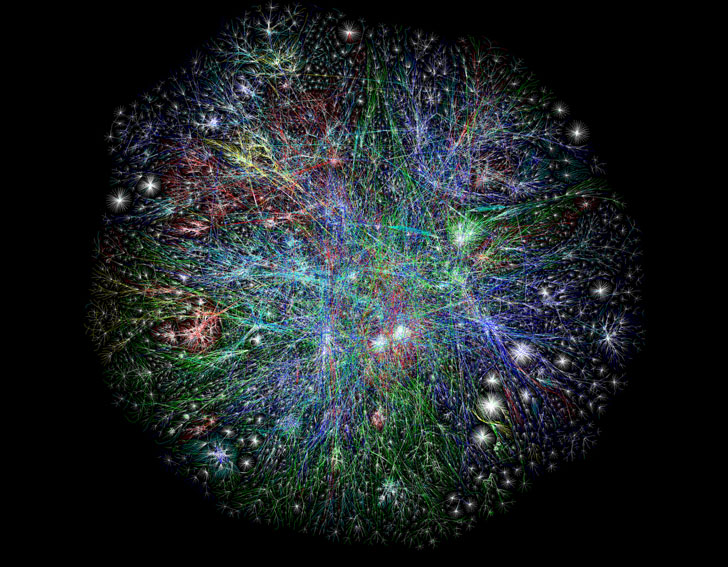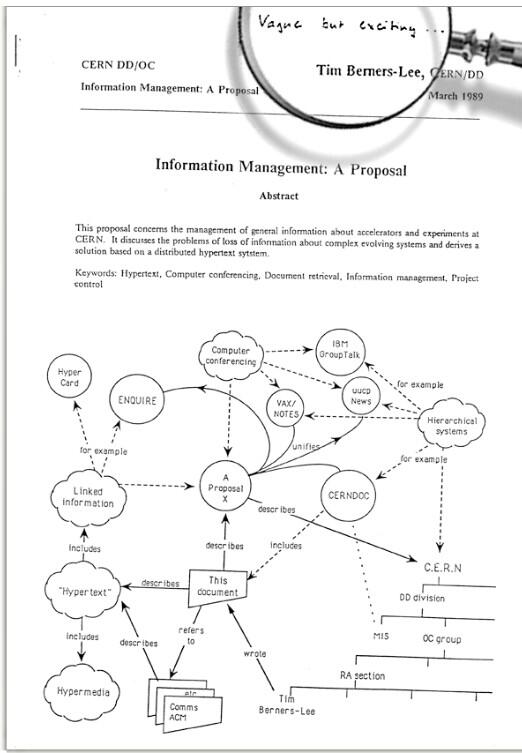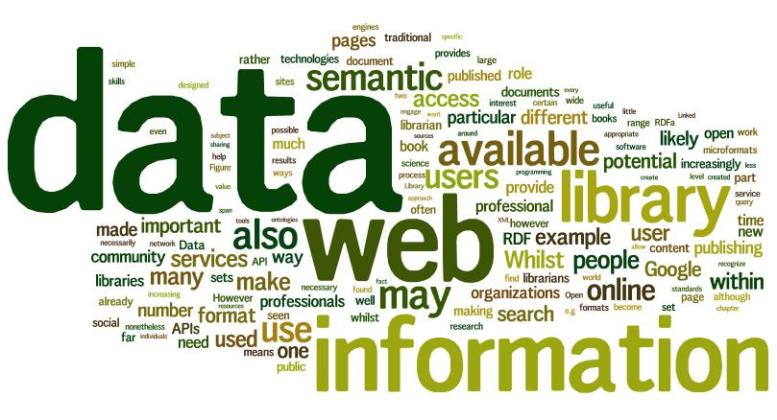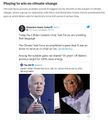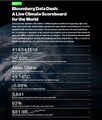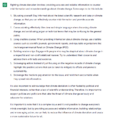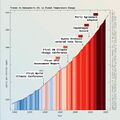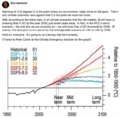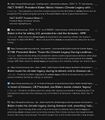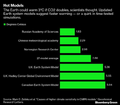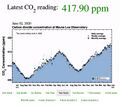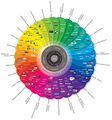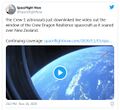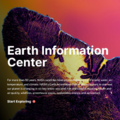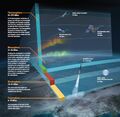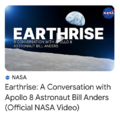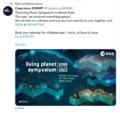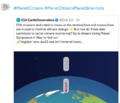Category:World Wide Web: Difference between revisions
Siterunner (talk | contribs) (Created page with "==History of the Worldwide Web== http://webfoundation.org/about/vision/history-of-the-web/") |
Siterunner (talk | contribs) No edit summary |
||
| (10 intermediate revisions by the same user not shown) | |||
| Line 1: | Line 1: | ||
http://webfoundation.org/about/vision/history-of-the-web/ | |||
[[File:Featured.png]] | |||
::[[File:Internet+.jpg]] | |||
=The Worldwide Web, Connecting Planet Earth= | |||
* Worldwide Web Consortium - http://www.w3.org/ | |||
* [http://www.greenpolicy360.net/w/File:Beginning_of_WWW_89_TimBerners-Lee_CERN.jpg WWW Origins-Foundation], est. by World Wide Web founder Tim Berners-Lee, "devoted to all people having access to the Web" | |||
: [http://WebFoundation.org WebFoundation.org] -- "The Web Belongs to All of Us" | |||
* http://webfoundation.org/about/vision/history-of-the-web/ | |||
: <big>'''[[Online Privacy]]'''</big> | |||
:: <big>'''[[Digital Rights]]'''</big> | |||
: [[File:Beginning of WWW 89 TimBerners-Lee CERN.jpg]] | |||
································································ | |||
<big><big>History and Legacy of 'the Web' </big></big> | |||
'''Human-computer interaction: electromechanical devices; word processing; hypertext; hypermedia (e-books); the Internet (Arpanet); digital video; databanks..." | |||
'''In 1962: "If a computer is capable of logic, then this clearly opens up the most exciting avenues"''' | |||
Raymond Baxter witnessed the extraordinary power of a computer, in Machines Like Men | |||
@BBCArchive | |||
* https://www.youtube.com/watch?v=xlUnSblYdlc | |||
'''Six years later: July 1968''' | |||
The Mother of All Demos, presented by Douglas Engelbart (Stanford / Menlo Park, Calif) | |||
"The Mother of All Demos is a name given retrospectively to Douglas Engelbart's December 9, 1968, demonstration of experimental computer technologies that are now commonplace. The live demonstration featured the introduction of the computer mouse, video conferencing, teleconferencing, hypertext, word processing, hypermedia, object addressing and dynamic file linking, bootstrapping, and a collaborative real-time editor." | |||
* https://www.youtube.com/watch?v=yJDv-zdhzMY | |||
Some highlights: | |||
5:00 - input: keyboard, mouse, extra-keyboard | |||
31:30 - mouse | |||
15:45 - todo list associated with a map | |||
1:16:57 - hangouts + collaboratively editing of docs | |||
@OldVideoPro | |||
2017 | |||
''A 16mm film of this demo was sent to the UK. At the time I was a lowly AV Technician at University College London. I ran the film in the New Chemistry Theatre for all the staff of the University of London Computer Centre and other interested parties. I watched fascinated. However, after 90 minutes, when it ended and the audience of senior London computing academics filed out, I heard several make comments such as "Interesting, but it will never catch on" and "What a waste of time." They had just seen the first ever Mouse, Hypertext, WP, video conferencing, and the Internet (Arpanet). I BELIEVED Doug Engelbart - they didn't! Here we are. years later, after the Xerox Star, Apple's Lisa and Mac and finally Windows. Amazing. As another commenter says, Doug should be as well known as Einstein - and FAR better than Steve Jobs or Bill Gates!'' | |||
○ | |||
'''Looking back, years before, in another era there was Memex -- "As We May Think" -- 1945 / 1959 Memex II''' | |||
''The concept of the memex influenced the development of early hypertext systems, eventually leading to the creation of the World Wide Web, and personal knowledge base software.'' | |||
''In "As We May Think", Vannevar Bush describes a memex as an electromechanical device enabling individuals to develop and read a large self-contained research library, create and follow associative trails of links and personal annotations, and recall these trails at any time to share them with other researchers. This device would closely mimic the associative processes of the human mind, but it would be gifted with permanent recollection...'' | |||
''The pioneer of human–computer interaction Douglas Engelbart was inspired by Bush's proposal for a co-evolution between humans and machines. In a 1999 publication, Engelbart recollects that reading "As We May Think" in 1945 infected him with the idea of building a mechanism that could navigate and extend the pool of human knowledge. Around 1961, Engelbart re-read Bush's article, and from 1962 onward Engelbart developed a series of technical designs. Engelbart updated the Memex microfilm storage desk and thereby arrived at a pioneering vision for a personal computer connected to an electronic visual display and a mouse pointing device. In 1962, Engelbart sent Bush a draft article for comment, Bush never replied. The article was published in 1963 under the title "A Conceptual Framework for the Augmentation of Man's Intellect".'' | |||
* https://en.wikipedia.org/wiki/Memex | |||
····························································· | |||
[[File:Wordcloud.jpg]] | |||
[[Category:About Us]] | |||
[[Category:Citizen Science]] | |||
[[Category:Digital Citizen]] | |||
[[Category:Digital Rights]] | |||
[[Category:EOS eco Operating System]] | |||
[[Category:Ecology Studies]] | |||
[[Category:Economic Development]] | |||
[[Category:Green Marketing]] | |||
[[Category:Internet]] | |||
[[Category:IOT]] | |||
[[Category:Mobile]] | |||
[[Category:Mobile Internet]] | |||
[[Category:Mobile Online]] | |||
[[Category:Mobile Web]] | |||
[[Category:Netizen]] | |||
[[Category:Networking]] | |||
[[Category:Online Privacy]] | |||
[[Category:Privacy Rights]] | |||
[[Category:Citizen Science]] | |||
[[Category:Countries]] | |||
[[Category:Democracy]] | |||
[[Category:Education]] | |||
[[Category:Media]] | |||
[[Category:Networking]] | |||
[[Category:Online Education]] | |||
Latest revision as of 00:39, 18 October 2023
The Worldwide Web, Connecting Planet Earth
- Worldwide Web Consortium - http://www.w3.org/
- WWW Origins-Foundation, est. by World Wide Web founder Tim Berners-Lee, "devoted to all people having access to the Web"
- WebFoundation.org -- "The Web Belongs to All of Us"
································································
History and Legacy of 'the Web'
Human-computer interaction: electromechanical devices; word processing; hypertext; hypermedia (e-books); the Internet (Arpanet); digital video; databanks..."
In 1962: "If a computer is capable of logic, then this clearly opens up the most exciting avenues"
Raymond Baxter witnessed the extraordinary power of a computer, in Machines Like Men
@BBCArchive
Six years later: July 1968
The Mother of All Demos, presented by Douglas Engelbart (Stanford / Menlo Park, Calif)
"The Mother of All Demos is a name given retrospectively to Douglas Engelbart's December 9, 1968, demonstration of experimental computer technologies that are now commonplace. The live demonstration featured the introduction of the computer mouse, video conferencing, teleconferencing, hypertext, word processing, hypermedia, object addressing and dynamic file linking, bootstrapping, and a collaborative real-time editor."
Some highlights:
5:00 - input: keyboard, mouse, extra-keyboard
31:30 - mouse
15:45 - todo list associated with a map
1:16:57 - hangouts + collaboratively editing of docs
@OldVideoPro
2017
A 16mm film of this demo was sent to the UK. At the time I was a lowly AV Technician at University College London. I ran the film in the New Chemistry Theatre for all the staff of the University of London Computer Centre and other interested parties. I watched fascinated. However, after 90 minutes, when it ended and the audience of senior London computing academics filed out, I heard several make comments such as "Interesting, but it will never catch on" and "What a waste of time." They had just seen the first ever Mouse, Hypertext, WP, video conferencing, and the Internet (Arpanet). I BELIEVED Doug Engelbart - they didn't! Here we are. years later, after the Xerox Star, Apple's Lisa and Mac and finally Windows. Amazing. As another commenter says, Doug should be as well known as Einstein - and FAR better than Steve Jobs or Bill Gates!
○
Looking back, years before, in another era there was Memex -- "As We May Think" -- 1945 / 1959 Memex II
The concept of the memex influenced the development of early hypertext systems, eventually leading to the creation of the World Wide Web, and personal knowledge base software.
In "As We May Think", Vannevar Bush describes a memex as an electromechanical device enabling individuals to develop and read a large self-contained research library, create and follow associative trails of links and personal annotations, and recall these trails at any time to share them with other researchers. This device would closely mimic the associative processes of the human mind, but it would be gifted with permanent recollection...
The pioneer of human–computer interaction Douglas Engelbart was inspired by Bush's proposal for a co-evolution between humans and machines. In a 1999 publication, Engelbart recollects that reading "As We May Think" in 1945 infected him with the idea of building a mechanism that could navigate and extend the pool of human knowledge. Around 1961, Engelbart re-read Bush's article, and from 1962 onward Engelbart developed a series of technical designs. Engelbart updated the Memex microfilm storage desk and thereby arrived at a pioneering vision for a personal computer connected to an electronic visual display and a mouse pointing device. In 1962, Engelbart sent Bush a draft article for comment, Bush never replied. The article was published in 1963 under the title "A Conceptual Framework for the Augmentation of Man's Intellect".
·····························································
Subcategories
This category has the following 22 subcategories, out of 22 total.
Pages in category "World Wide Web"
The following 88 pages are in this category, out of 88 total.
C
E
- Each of us can make a positive difference
- Earth and Space, Politics
- Earth Day 2020
- Earth Day Memories on the 50th Anniversary
- Earth from NASA
- Earth Science Research from Space
- EarthTime
- Eco-nomics
- Environmental Law, Rollbacks under Trump 2016-20
- Environmental Laws and Modern Environmental Movement
- Environmental movement
- Environmental Studies Online
- EOS eco Operating System
- ESA Living Planet Announcement - May 2022
- European Union Green Deal - Fit for 55
G
- Generation Green
- Glasgow Climate Summit - Pledges, Promises, Declarations - What's Next Up
- Global Climate Action Summit
- Google Earth
- Green AI
- Green Bank in Maryland - and More
- Green Marketing
- Green Policy domains
- Green Politics 360
- Green Stories of the Day
- Green Stories of the Day - GreenPolicy360 Archive
- Greening Our Blue Planet
- GreenPolicy360 (eOS)
- GreenPolicy360 Archive Highlights 2013
- GreenPolicy360 Archive Highlights 2014
- GreenPolicy360 Archive Highlights 2015
- GreenPolicy360 Archive Highlights 2016
- GreenPolicy360 Archive Highlights 2017
- GreenPolicy360 Archive Highlights 2018
- GreenPolicy360 Archive Highlights 2019
- GreenPolicy360 Archive Highlights 2020
- GreenPolicy360 Archive Highlights 2023
- GTN GreenLinks Trending News
P
S
Media in category "World Wide Web"
The following 200 files are in this category, out of 641 total.
(previous page) (next page)- 2001 pic3.jpeg 800 × 450; 65 KB
- 2020 record temperatures.png 800 × 502; 358 KB
- 33 false statements.png 640 × 91; 19 KB
- 7-20-2020 GreenPolicy360 RT No.2.jpg 591 × 510; 125 KB
- A Brief History of the Future - 2s.jpg 448 × 309; 70 KB
- A Planet Citizen View.png 799 × 1,241; 1.64 MB
- A scorching year, what about the 360 warming data.jpg 600 × 706; 106 KB
- Above.png 500 × 375; 173 KB
- Acceptance on behalf of the United States of America.png 448 × 306; 62 KB
- ACLU-FCC-NET NEUTRALITY.png 448 × 241; 40 KB
- Act now for a livable future.png 501 × 275; 272 KB
- Acting to make a positive difference - in St Petersburg Florida.png 600 × 723; 645 KB
- Ag production and GHG emissions.jpg 680 × 510; 33 KB
- AOC re climate task force - july 8 2020.jpg 585 × 203; 38 KB
- Aspen Trees Fall Colors Web-of-Roots Connected Wiki commons.jpg 800 × 533; 171 KB
- Astro POV - Mike Massimino - PlanetCitizen.png 800 × 466; 792 KB
- Astro Samantha.png 448 × 266; 78 KB
- At Poynter, St Petersburg, Florida.png 640 × 345; 555 KB
- Atmosphere Science.jpg 800 × 600; 45 KB
- Atmospheric Experiment of Humanity.jpg 519 × 574; 201 KB
- Attack from Within - by Barb McQuade.png 600 × 630; 222 KB
- Banking - finance - climate - Mann-1.jpg 452 × 640; 162 KB
- Banking - finance - climate - Mann-2.jpg 452 × 640; 164 KB
- Battle for Democracy.jpg 640 × 123; 24 KB
- Be a planet citizen, make a choice, act to reduce climate change.jpg 1,024 × 595; 60 KB
- Beginning of WWW 89 TimBerners-Lee CERN.jpg 522 × 753; 46 KB
- Bernie Sanders, Senate 2.PNG 800 × 517; 379 KB
- Bernie Sanders, Senate Aug 3.PNG 800 × 518; 388 KB
- Biden - clean energy ambitions.JPG 640 × 334; 31 KB
- Biden announces EV policies - Aug 2021.jpg 600 × 604; 112 KB
- Biden introduces leadership team - Nov 24 2020.jpg 800 × 644; 173 KB
- Biden selects Kerry as special climate envoy.jpg 592 × 505; 87 KB
- Biden urged to act - Oct 18 2021 - The Guardian.png 663 × 600; 497 KB
- Biden's assembled an all-star climate team 4-21-2021.jpg 682 × 732; 309 KB
- Biden-Harris, CNN News Online - Nov 8, 2020.jpg 800 × 484; 114 KB
- Biden-Sanders Unity Task Force on Climate.jpg 701 × 780; 139 KB
- Big Oil Rocked by News May 27 2021.jpg 639 × 600; 84 KB
- Big Wobble 2020.jpg 507 × 342; 79 KB
- Bill McKibben to next generations.JPG 700 × 700; 203 KB
- Bill Nelson on Global Temp Rise and Climate Change.png 640 × 353; 100 KB
- Bill Nye The Planet's on Fire.jpg 800 × 675; 106 KB
- Bloomberg Carbon Clock 10-26-2021 8-47-05 AM EST.png 800 × 195; 356 KB
- Bloomberg Live Climate Data Dashboard.jpg 640 × 756; 156 KB
- Blue Marble photo taken by the crew of Apollo 17 (1972).jpg 642 × 605; 129 KB
- Born-digital-generation.jpg 387 × 259; 95 KB
- Breakpoint - Reckoning with America's Environmental Crisis.jpg 329 × 500; 49 KB
- Bridenstine talks.png 1,485 × 911; 223 KB
- Bucky Trimtab.jpg 348 × 336; 88 KB
- Burst of climate denial as Trump presidency ends.jpg 632 × 604; 92 KB
- Car heating and cooling.png 465 × 635; 261 KB
- Carbon Brief - Greenhouse gas levels 2021.png 640 × 436; 292 KB
- Carbon Footprint - BP-McKibben-Solnit-Aug2021.jpg 516 × 264; 66 KB
- Carbon Mapper - Launch - April 2021.jpg 800 × 323; 92 KB
- Cardinal directions m.png 250 × 250; 20 KB
- Caribbean Sea hot - June night 2024.png 676 × 600; 386 KB
- CFSV2 world temp July 3, 2023.png 600 × 800; 513 KB
- CH4 graph - 1980-2020.JPG 640 × 446; 22 KB
- Changes in carbon dioxide per 1000 years - via Climate Central.jpg 682 × 424; 34 KB
- ChatGPT talks of fighting climate denialism.png 707 × 747; 239 KB
- China Record Heat - August 2022.png 800 × 1,343; 812 KB
- Citizens Climate Lobby - Save Our Future Act 2021.jpg 518 × 262; 77 KB
- Climate Action 25th conf in Madrid.jpg 680 × 510; 22 KB
- Climate activist - Steven Schmidt - 1978 on.png 600 × 480; 174 KB
- Climate and National Security.jpg 603 × 533; 157 KB
- Climate Books - 2020.jpg 800 × 450; 69 KB
- Climate Change at EDX, taught by Michael Mann.jpg 800 × 452; 60 KB
- Climate Change COP27 - Nov 11 2022 US Representatives.jpg 712 × 444; 54 KB
- Climate Change COP27 - Nov 11 Kathy Castor.jpg 712 × 710; 77 KB
- Climate Change Poses a Widening Threat to National Security.png 600 × 781; 310 KB
- Climate Change US EPA.jpg 600 × 703; 95 KB
- Climate Conferences 1979-2020.jpg 768 × 768; 121 KB
- Climate Crisis - Emily Atkin Heated No. 1.jpg 537 × 453; 61 KB
- Climate Crisis and the Global Green New Deal.jpg 293 × 418; 33 KB
- Climate debate.jpg 493 × 580; 129 KB
- Climate Desk.jpg 390 × 226; 21 KB
- Climate diplomacy is failing - June 2020.jpg 592 × 440; 71 KB
- Climate Emergency Institute - Oct 2022.png 610 × 600; 274 KB
- Climate Emergency Institute -- 2021.jpg 800 × 450; 55 KB
- Climate emergency.jpg 800 × 450; 69 KB
- Climate Headline News around the World - July 2023.jpg 600 × 704; 151 KB
- Climate Lawsuit-Our Childrens Trust-Florida.png 462 × 760; 289 KB
- Climate Legacy of Biden.jpg 600 × 687; 265 KB
- Climate Models.png 639 × 558; 123 KB
- Climate News - Oct 28 2022.jpg 626 × 600; 88 KB
- Climate News - United Nations Report - Feb 2022.png 768 × 878; 539 KB
- Climate News Dec 4 2023 in Dubai.png 800 × 1,037; 649 KB
- Climate Plans Enforcement - Resources - GreenPolicy.png 768 × 897; 686 KB
- Climate poll - Florida.png 640 × 267; 36 KB
- Climate strike - Week 171.png 739 × 600; 834 KB
- Climate Strike Around the World - Sep20,2019.jpg 700 × 830; 119 KB
- Climate Summit - Leonardo DiCaprio.png 600 × 663; 521 KB
- Climate Summit live updates - Nov 2 2021.png 751 × 600; 420 KB
- Climate Summit planned-1.jpg 800 × 301; 53 KB
- Climate Summit planned-2.jpg 800 × 187; 31 KB
- Climate Summit planned-3.jpg 800 × 278; 44 KB
- Climate Summit planned-4.jpg 800 × 241; 41 KB
- Climate Time Machine NASA Earth Science-2.png 714 × 210; 210 KB
- Climate usa 60 years on.jpg 800 × 480; 34 KB
- ClimateNewsFlorida.jpg 448 × 191; 36 KB
- CO2 at Mauna Loa data - June 02, 2020 - 417.90 ppm.jpg 640 × 566; 66 KB
- CO2 cumulative emissions 1850 - 2021 - countries.jpg 640 × 462; 211 KB
- CO2 Emissions per Capita by Country 1960-2014.png 800 × 451; 424 KB
- CO2 emissions-around-the-world.png 800 × 595; 123 KB
- CO2 global pathways via IPCC AR6 - how will we respond.jpg 800 × 450; 57 KB
- Computing and energy saving green solutions.jpg 521 × 476; 86 KB
- Connect cooperative networking 2.jpg 415 × 425; 48 KB
- Connect cooperative networking 2a.jpg 280 × 287; 29 KB
- Consumption & Extinction.png 331 × 207; 18 KB
- Conversation prism.jpeg 561 × 600; 0 bytes
- ConversationPrism4 WEB 2880x1800.jpg 2,880 × 1,800; 981 KB
- COP26 Climate Summit concludes.jpg 600 × 800; 160 KB
- COP26 concludes - 2.png 648 × 467; 177 KB
- COP26 concludes - 3.png 648 × 713; 416 KB
- COP26 concludes.png 648 × 528; 329 KB
- COP26 in GLASGOW - 31 OCT-12 NOV 2021.jpg 800 × 264; 51 KB
- COP27 'opening speech'.png 640 × 460; 160 KB
- COP28 News - Dec 13 2023.png 800 × 898; 410 KB
- CopernicusEU - Sentinel5P Atmosphere Monitoring Mission - 2.jpg 795 × 1,477; 654 KB
- CopernicusEU - Sentinel5P Atmosphere Monitoring Mission.png 583 × 465; 222 KB
- Coral bleaching - August 2023.png 488 × 430; 261 KB
- Coral bleaching - NOAA - August 2023.png 488 × 338; 201 KB
- Costs of War US Post 9-11 War Spending.jpg 800 × 305; 60 KB
- Countries Nations world map s.jpg 300 × 152; 16 KB
- Covering Climate Now.jpg 493 × 498; 67 KB
- Cradle of Civilization - and climate change.jpg 640 × 360; 70 KB
- Creative commons licenses.png 415 × 318; 31 KB
- Crew-1 over New Zealand.jpg 570 × 523; 86 KB
- CSDA Program and Planet.jpg 800 × 379; 99 KB
- Cumulative CO2 Emissions by Country Since 1850.png 800 × 445; 445 KB
- Cyberlaw2.jpg 317 × 159; 18 KB
- Defend Our Future 6-1-2020.jpg 585 × 458; 103 KB
- Democratic Climate Plan-Introduced June 2020.jpg 528 × 561; 117 KB
- Democratic National Convention-62 climate speakers.jpg 443 × 407; 57 KB
- Democratic Party Climate Bill - Aug 2022.png 640 × 269; 70 KB
- Democratic Party pres candidates debate in Miami-June 2019.jpg 800 × 534; 124 KB
- Democratic presidential candidates on the Green New Deal.jpg 800 × 359; 57 KB
- Denying human-caused climate change.jpg 639 × 620; 129 KB
- DeSantis against climate science - 2.jpg 640 × 480; 122 KB
- DeSantis against climate science - again.jpg 460 × 640; 105 KB
- Digital rights and responsibilities.jpg 438 × 163; 19 KB
- Digital Rights Tag Cloud from GreenPolicy360.net.png 814 × 459; 139 KB
- Digital.png 427 × 116; 51 KB
- Disinformation and Misinformation - via Wikipedia.jpg 800 × 69; 30 KB
- Don't Look Up ....jpg 430 × 543; 172 KB
- Don't Look Up.jpg 800 × 450; 104 KB
- Dove1 image.jpg 420 × 308; 26 KB
- DSCOVR EPIC - July 20 2022.png 532 × 612; 315 KB
- Earth AI - Feb 2022.png 482 × 480; 192 KB
- Earth Day - DSCOVR-EPIC 2019.jpg 800 × 772; 150 KB
- Earth Day 2021 - Climate Summit News-1.jpg 491 × 270; 127 KB
- Earth Day 2022 - Act up.png 457 × 370; 155 KB
- Earth Day 50 years on.jpg 480 × 548; 107 KB
- Earth Day and Climate at the Center.jpg 595 × 604; 131 KB
- Earth Day memories.png 800 × 210; 381 KB
- Earth Emoji.png 50 × 50; 2 KB
- Earth in Our Hands.png 76 × 76; 5 KB
- Earth Information Center - 2022 Graphic NASA.png 800 × 981; 868 KB
- Earth Information Center - NASA 336.png 336 × 336; 279 KB
- Earth Information Center - NASA.png 768 × 769; 1.21 MB
- Earth Information Center from NASA.jpg 800 × 577; 94 KB
- Earth Observing System - fleet of satellites.png 740 × 576; 557 KB
- Earth POV from the ISS Cupola-m.jpg 800 × 480; 71 KB
- Earth Right Now.png 583 × 365; 145 KB
- Earth Summit 1992-s.png 336 × 418; 283 KB
- Earth Summit 1992.jpg 600 × 746; 171 KB
- Earth System Observatory-1.jpg 580 × 833; 129 KB
- Earth System Observatory-2.jpg 580 × 831; 69 KB
- Earth trapping unprecedented amount of heat - NASA.jpg 468 × 373; 56 KB
- Earth Viewing from the International Space Station.jpg 496 × 307; 45 KB
- Earth-upper-atmosphere-NASA.jpg 800 × 781; 327 KB
- EarthDecadel Priorities-2018.jpg 779 × 529; 85 KB
- Earthrise - NASA - Astro Bill Anders.png 497 × 479; 216 KB
- Earths rotation as we roll thru space.jpg 800 × 529; 69 KB
- EarthScience Missions via the EOS - 2022.png 800 × 219; 139 KB
- Economist.com global capital snapshot as of July 2020.jpg 800 × 477; 119 KB
- Ecostress Mission-Aug 2020.jpg 640 × 311; 85 KB
- EDF satellite - methane tracking.png 600 × 674; 388 KB
- ElectionResources.png 607 × 243; 141 KB
- Electoral Reform US FairVote.jpg 662 × 270; 36 KB
- Elon Musk quote - gas externality price.png 680 × 320; 199 KB
- Emerging IT Map circa 2015.png 1,023 × 971; 555 KB
- Emissions graph - gleick tw 2018.jpg 640 × 364; 37 KB
- Energy Charter Treaty.jpg 512 × 480; 74 KB
- Energy Imbalance, Climate Change - Aug 1 2021.png 640 × 672; 394 KB
- Envir earth day 1970.jpg 197 × 295; 13 KB
- Environmental laws in US - Supreme Court votes soon.png 800 × 414; 334 KB
- EO Snapshot 6-29-2016 10-44-49 AM.png 839 × 768; 907 KB
- EOS starliner gr2.png 320 × 91; 3 KB
- EPA website a 'ghost page' now.png 667 × 233; 45 KB
- ESA Living Planet Symposium - Announcement.png 637 × 600; 508 KB
- ESA Living Planet Symposium - May 2022.png 700 × 600; 258 KB
- ESG Fight - Feb 2023.png 396 × 194; 88 KB
- Estuary in Clearwater on Tampa Bay.jpg 3,584 × 2,016; 1.5 MB

